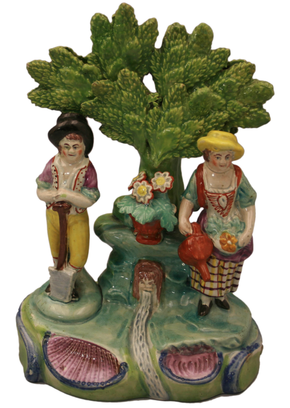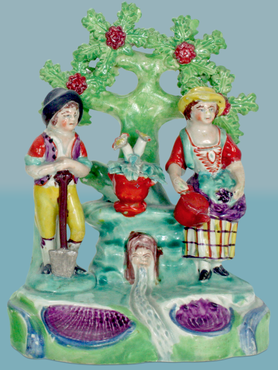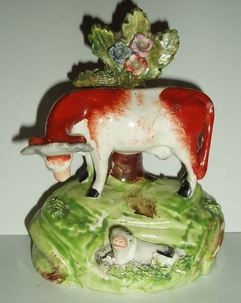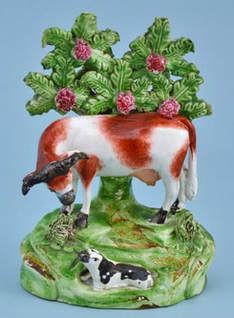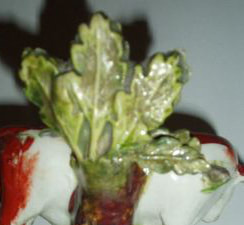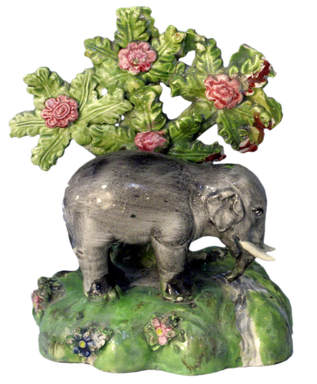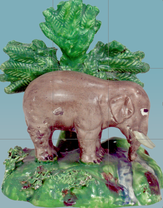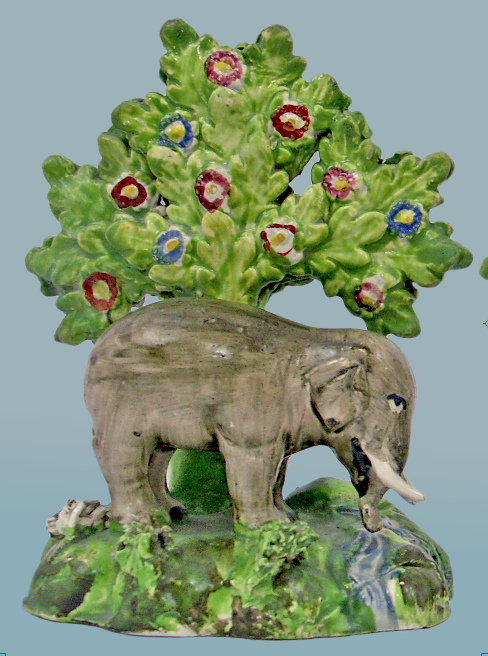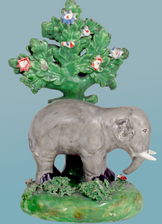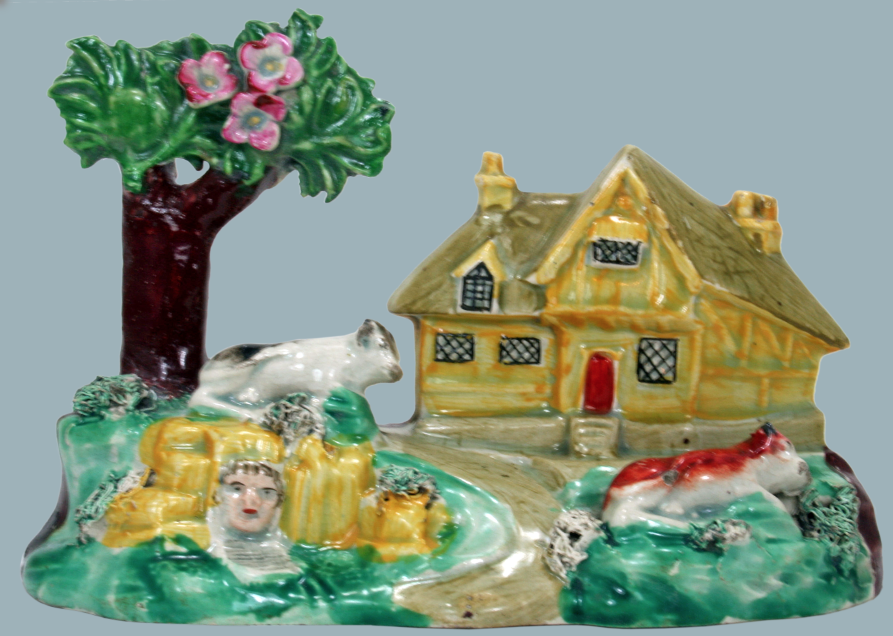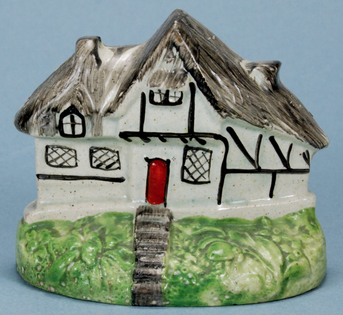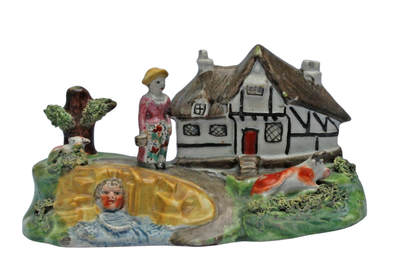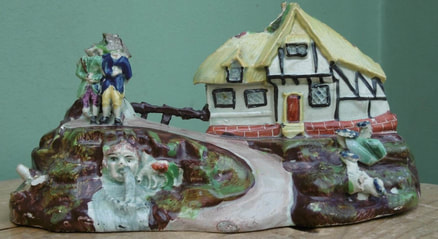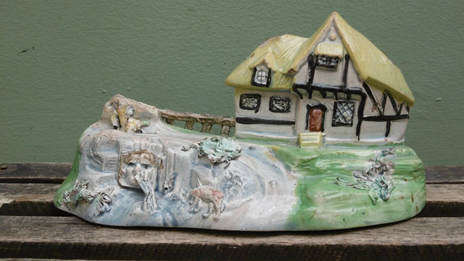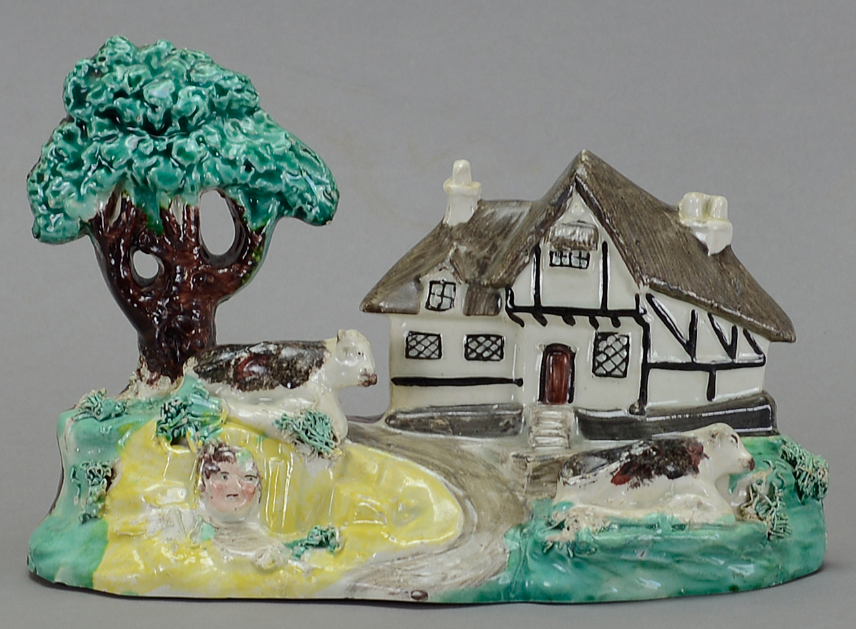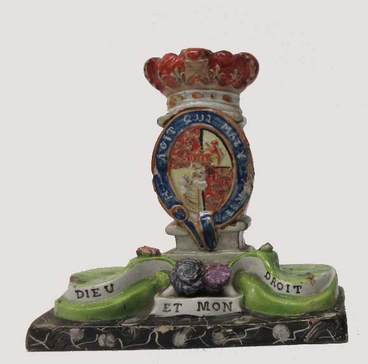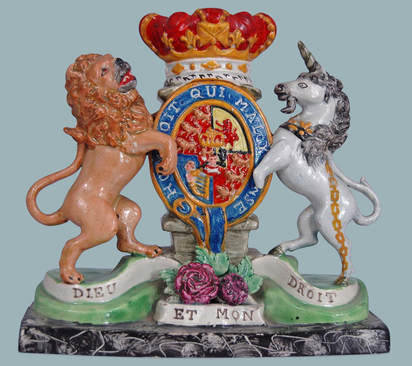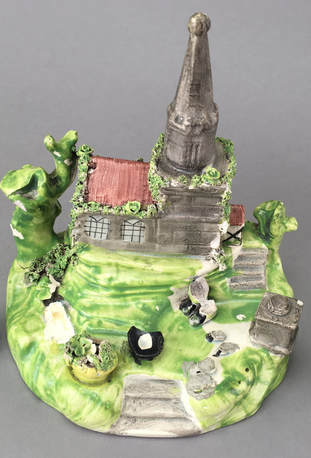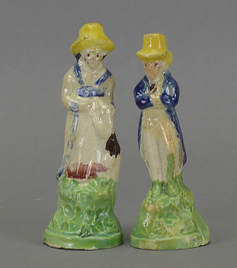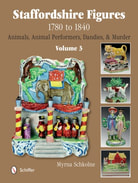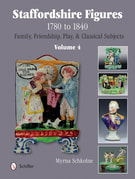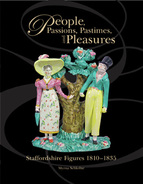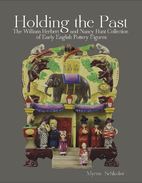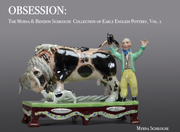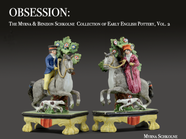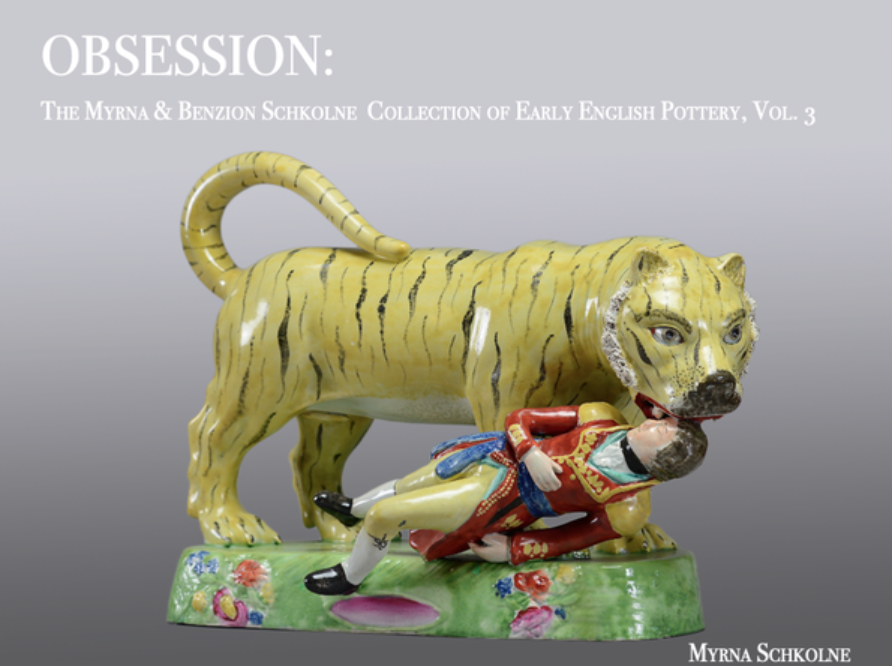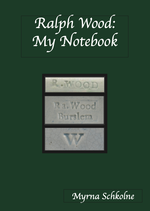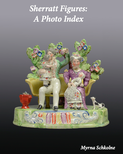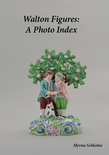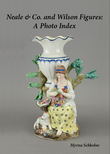Most importantly, the bocage on this group is an old bocage that, like the group, was made circa 1825. The problem is that the bocage was made by one pot bank (the Patriotic Group pot bank) and the rest of the group was made by another (the Box Title Group pot bank). The two were united courtesy of a modern restorer. This is what the group should look like. Much more balanced, don't you think?
Auctions are not for the unwary. They are sometimes said to be the places dealers send their mistakes, but they are also the places that dealers make mistakes. Sure enough, another dealer bought the mismatched group, and I stumbled across it yet again at a show in the US. Again, I pointed out the issue. This time the dealer's response was not quite as heart warming. "Well," he said, "if someone asks me, I will say that the bocage has been reattached." Hmm....THE bocage or A bocage???
The mismatched group surfaced again in a US collection shared on FaceBook recently. Mismatched figures are really not that common, but they are common enough that you should buy your figures from a dealer who can help you avoid this trap. The first one I encountered was a Walton figure of an apostle, with a transplanted Sherratt bocage. Similarly, you can see a "Sherratt" bocage on a cow of the type that "Sherratt" never made. On the left is the mismatched bovine; on the right is a correct example.
I am always reluctant to let a reattached bocage influence my decision on attribution. Case in point is the cottage below.
I have long suspected that "Sherratt" made the cottage below because the design on the base is very suggestive of "Sherratt"--but there are just not enough features to confirm an attribution.
Details matter. Having the correct bocage on your figure impacts its integrity and value. As I wrote last month, be fully informed about condition when you buy a piece of early pottery. If the bocage has been reattached, make sure that the bocage is of the correct form--and preferably the original bocage. If in doubt, take time to ask me or check a book. And don't buy in haste lest you are forced to repent at your leisure.
